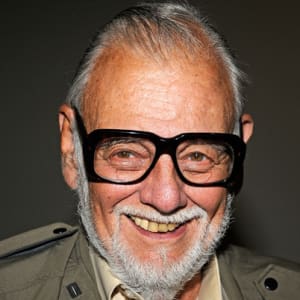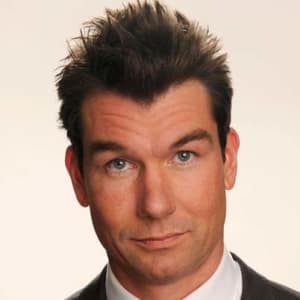
George A. Romero
Filmmaker George A. Romero is considered the father of the modern zombie movie for creating such classic horror films as ‘Night of the Living Dead’ and ‘Dawn of the Dead.’
Who Was George A. Romero?
Legendary filmmaker George A. Romero was born on February 4, 1940, in the Bronx, New York. He started out making commercials and short films before moving on to feature films. His iconic movies, including Night of the Living Dead and Day of the Dead, he combines horror with social commentary and satire.
Early Years
The son of a commercial artist, George Andrew Romero loved watching movies growing up. The Tales of Hoffman (1951), a film adaptation of an opera, was an early influence. As a teen, he borrowed the film numerous times, using a projector to watch it at home. Romero once said that only one other person took this movie out as much as he did, and the fellow fan turned out to be Martin Scorsese.
Romero studied the arts at Carnegie Mellon University in Pittsburgh, Pennsylvania. His interests included art, theater and design, as well as film. At the beginning of his career, Romero made short films and commercials, and one of his early breaks was making educational shorts for the PBS children's series Mister Rogers' Neighborhood.
'Night of the Living Dead'
George A. Romero established himself as the king of all zombie movies with his 1968 film Night of the Living Dead. In this pivotal black-and-white horror film, which was made for $100,000, a group of people seek refuge inside an old farmhouse to escape the clutches of flesh-eating zombies. The film stirred controversy because of its graphic violence, but also received praise for being a commentary about the modern society. With Duane Jones, a black actor, playing the lead role, audiences saw the movie reflect racial tensions in society.
“We never thought of it being a racial piece at all, never,” Romero said in 2014 an interview with NPR. “But because the character was played by an African-American, you almost don’t notice anything else. We didn’t realize that. Duane did. . .
"I think that was largely what made the film noticeable," he explained.
Romero once said that the zombies "don't particularly represent anything except a new society threatening to take over, and in this case devouring, literally, the old." And in the late 1960s, it was traditional American society trying to battle against the counterculture movement. It became part of his trademark style to mix horror, satire, and social commentary into his films.
Romero tried to branch out beyond zombies, but his efforts met with little success. There's Always Vanilla (1972), Hungry Wives (1973), and The Crazies (1973) proved to be disappointments. In 1978, Romero returned to the familiar conflict of humans versus zombies in the commercial and critical success Dawn of the Dead. This time around, the zombies pursue a group of people into a shopping mall, Romero's critique of the voracious consumerism of the day.
'Creepshow' & 'Day of the Dead'
In the next decades, Romero turned out some successes and some disappointments. His biker film Knightriders (1981), with a young Ed Harris in a featured role, proved to be a flop. Romero fared better when he teamed up with author Stephen King for the film Creepshow (1982), which was modeled after the horror comics of the 1950s. While not critically acclaimed, it did well enough at the box office to warrant a sequel, Creepshow 2 (1987). Romero also worked in television, serving as the host and a producer of Tales from the Darkside.
Never abandoning zombies for long, Romero released his third film in the series, Day of the Dead, in 1985. He dialed down some of the violent content to focus on character development. The film looks at scientific research and the military as the few remaining humans look for ways to retrain or enslave the zombie majority. One scientist tries to reprogram a zombie named Bub not to eat human flesh.
Romero was less prolific during the 1990s with only one major film to his credit. Again working on material by Stephen King, he directed the film adaptation of The Dark Half (1993), starring Timothy Hutton as a writer who battles his own fictional alter-ego.
Later Years
As he had in the past, Romero returned to his zombie films as a means of making social satire and commentary. He made three more installments in the series. In Land of the Dead (2005), Romero explored political power and revolution in one of the remaining human cities. John Leguizamo, Simon Baker and Asia Argento starred in the film, which Variety called "a tour de force of . . . independent filmmaking . . . [and] independent thinking." Romero then took on the media and journalism in Diary of the Dead (2007), and he said George A. Romero's Survival of the Dead (2009) addressed "tribalism" when fighting breaks out among the residents of a New England island over how to handle zombies.
Romero also has participated in the remakes of some of his classic works. He was an executive producer on the 2010 version of The Crazies starring Timothy Olyphant. Romero also served as an executive producer on the 2012 documentary Into the Dark: Exploring the Horror Film.
Romero has contributed to several video games, including Call of Duty: Black Ops.
Personal Life & Death
Twice married, Romero has two children, son G. Cameron and daughter Tina. Both of them have followed him into the film industry.
The legendary father of the modern zombie movie died in his sleep on July 16, 2017 at the age of 77. According to a statement to the Los Angeles Times, Romero died "while listening to the score of one his favorite films, 1952’s The Quiet Man" after a “brief but aggressive battle with lung cancer.”



